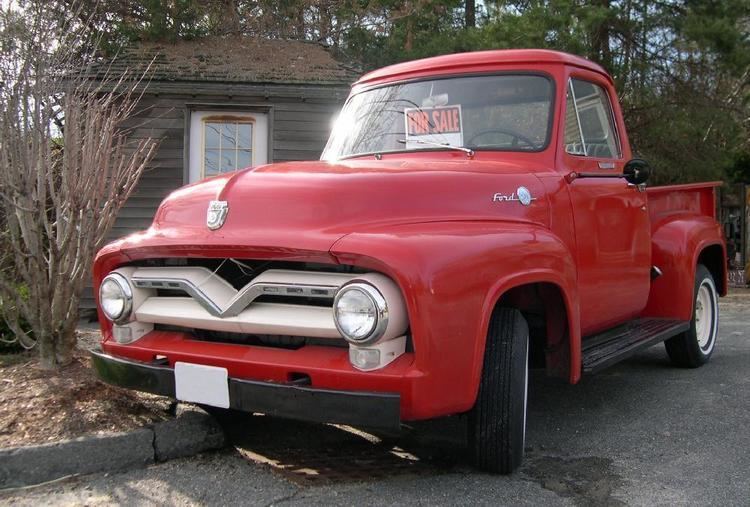Manufacturer Ford Class Full-size pickup truck | Also called Mercury M-Series | |
 | ||
Production 1952–1956
1957–1962 (Brazil) Assembly Chester, Pennsylvania, USA
Dearborn, Michigan, USA
Edison, New Jersey, USA
Long Beach, California, USA
Norfolk, Virginia, USA
St. Paul, Minnesota, USA
St. Louis, Missouri, USA
São Paulo, Brazil (Ford Brazil)
Hapeville, Georgia, USA
Louisville, Kentucky, USA
San Jose, California, USA
Highland Park, Michigan, USA Body style 2-door pickup
4-door panel truck | ||
The Ford F-Series was redesigned by Ford for 1953 with a more integrated look. The pickups also obtained their widely familiar names: The F-1 now became the F-100, the F-2 and F-3 now became the F-250, and the F-4 now became the 1-ton F-350. Optional interior amenities were new, including a dome light, lighter, arm rests, sun visors and a radio. On March 13, 1953, the Ford-O-Matic automatic transmission became an option.
Contents
Engine types
The 1953 F-100 was the last year for the flathead engine in the US. Models in Canada, however, (Mercury M-Series), retained the flathead. 1953-54 saw the introduction of the new 239 CID overhead valve Y-block V8, dubbed "Power King." The six-cylinder engine's displacement was also increased from 215 to 223 CID and power steering was introduced as an option. In 1954 the 239 Y-block was replaced with the 279 and 317.
Body styles
The 1956 F-100 is a one-year only body style. The 1956 F-100 is easily identified as it has vertical windshield pillars and a wrap around windshield as opposed to the sloped pillars and angled windshield of the 1953-55. The 1956 model also offered a larger wraparound back window as an option. Starting in 1956, Ford offered the very rare "Low GVWR" versions of each model. Also in 1956, seat belts became an option.
Construction in Brazil
Second generation trucks were built in Brazil from 1957 to 1962 as the F-100, F-350 and F-600.
